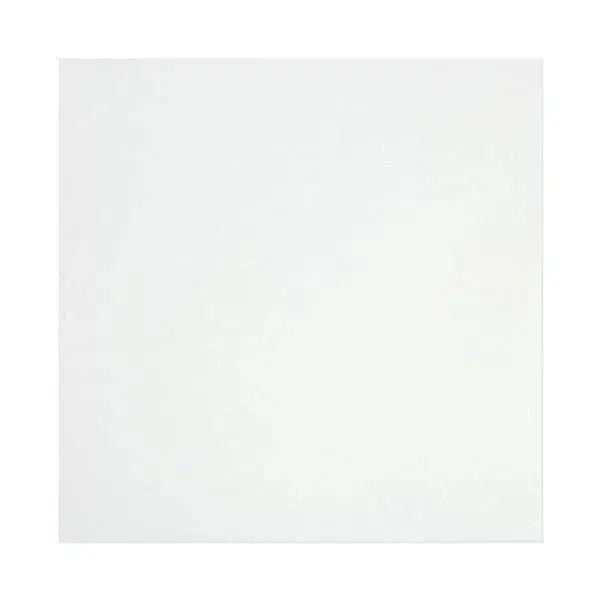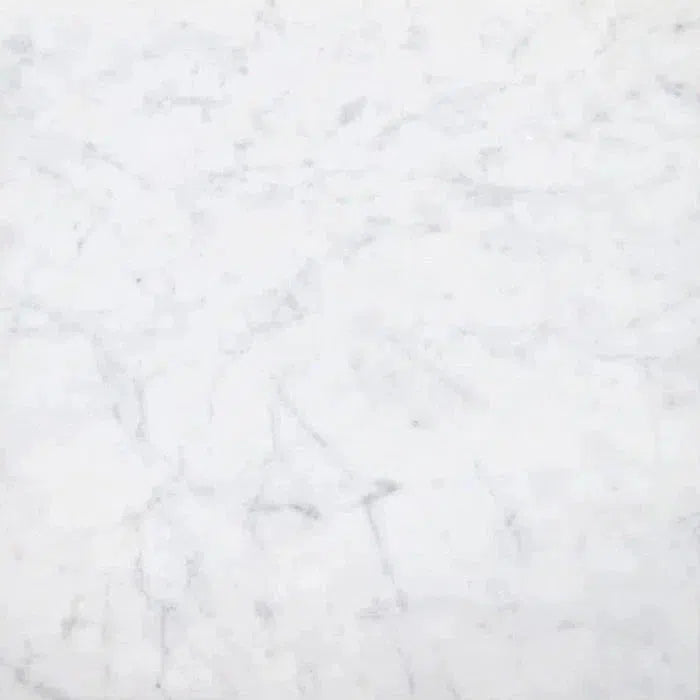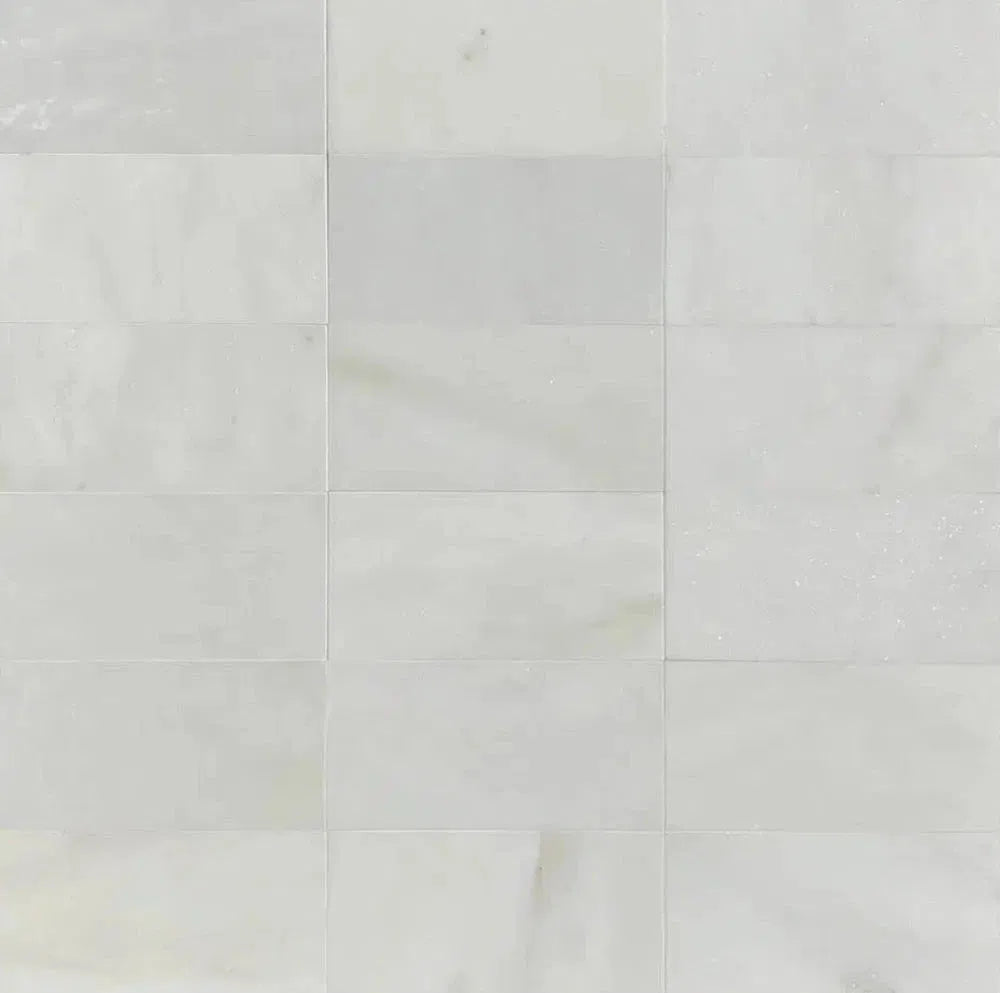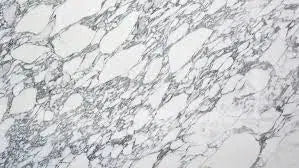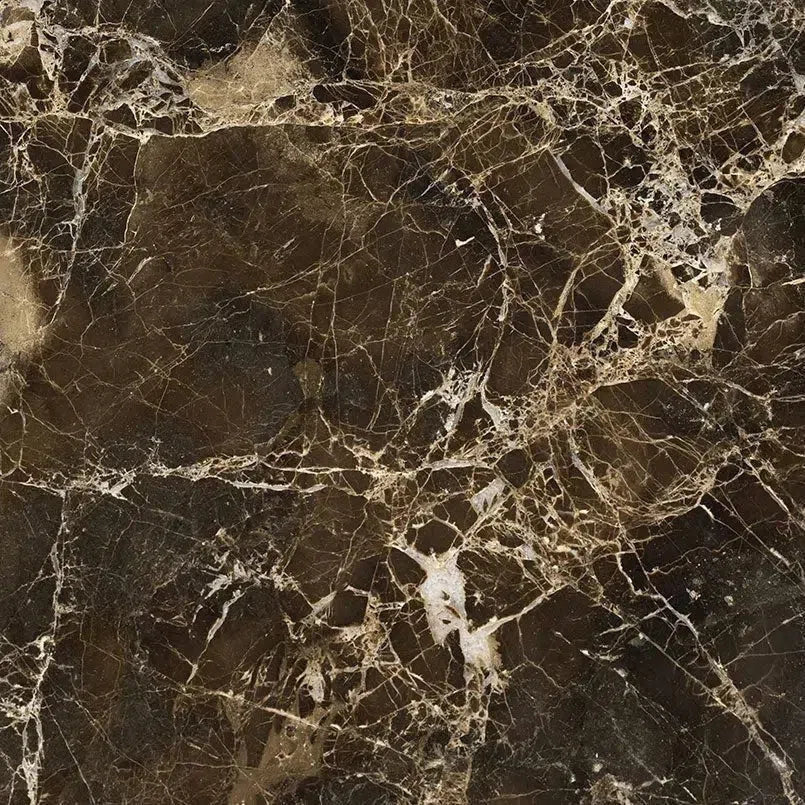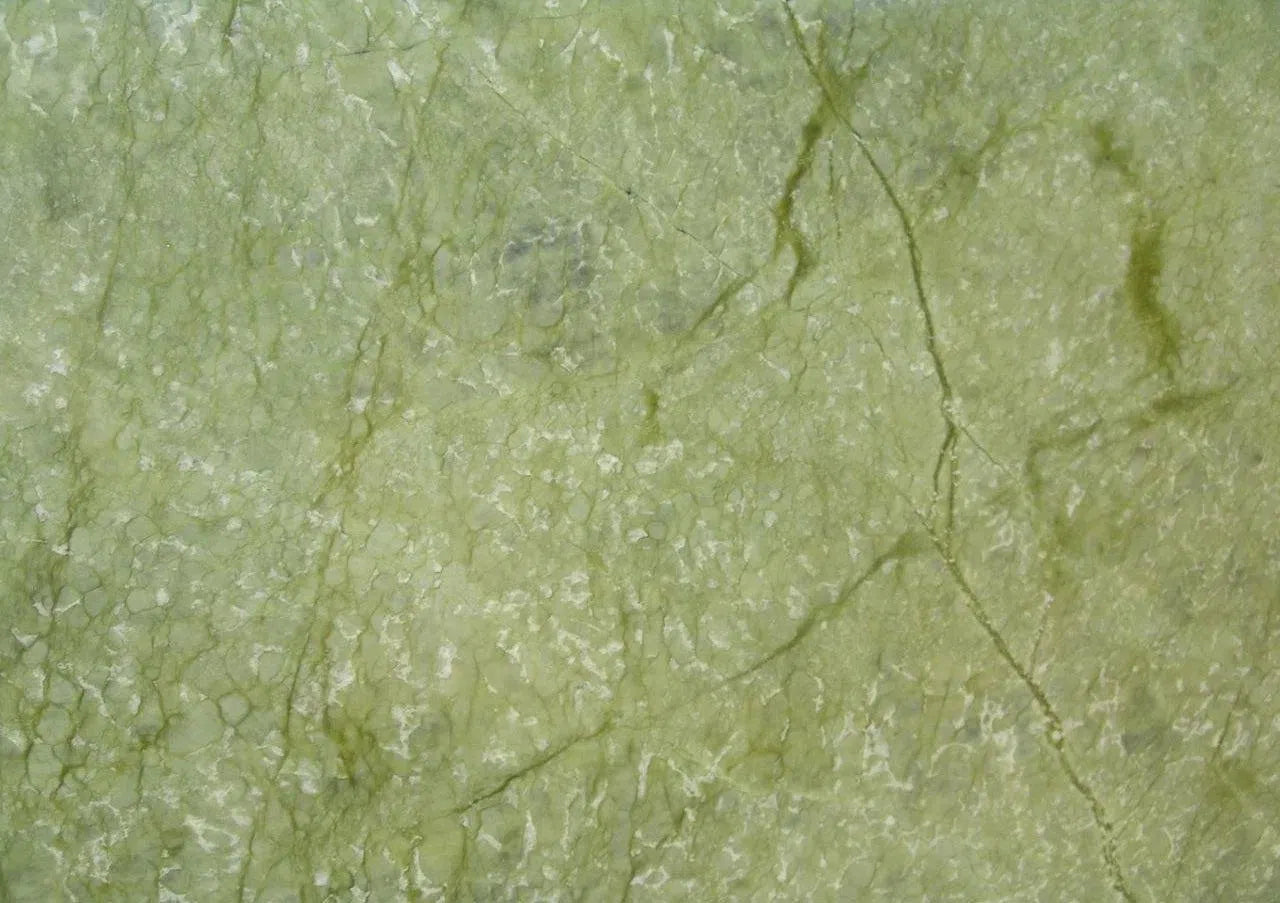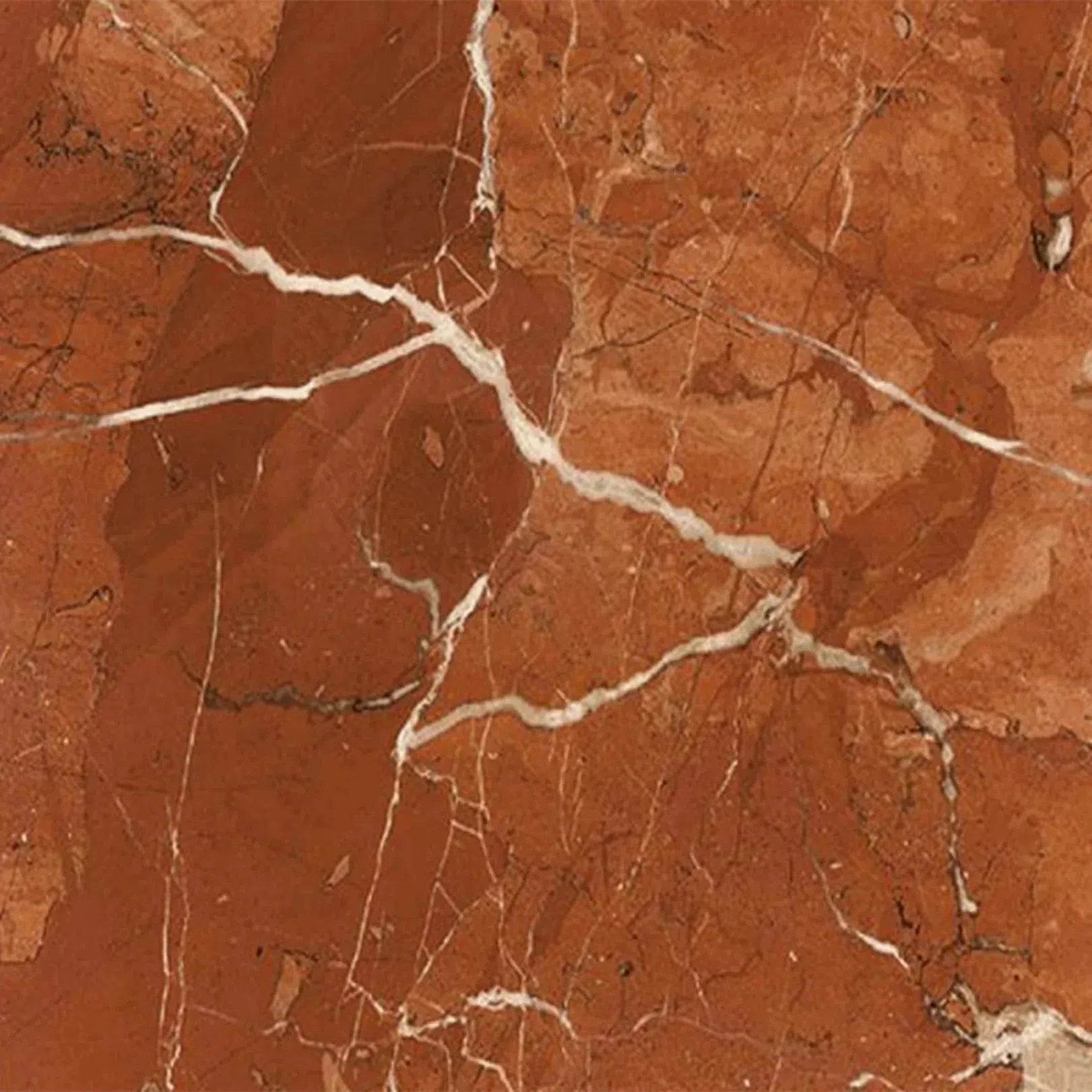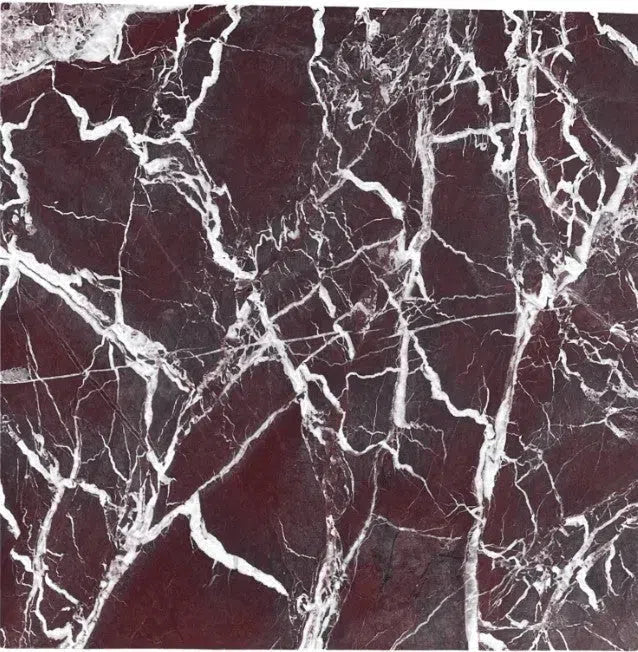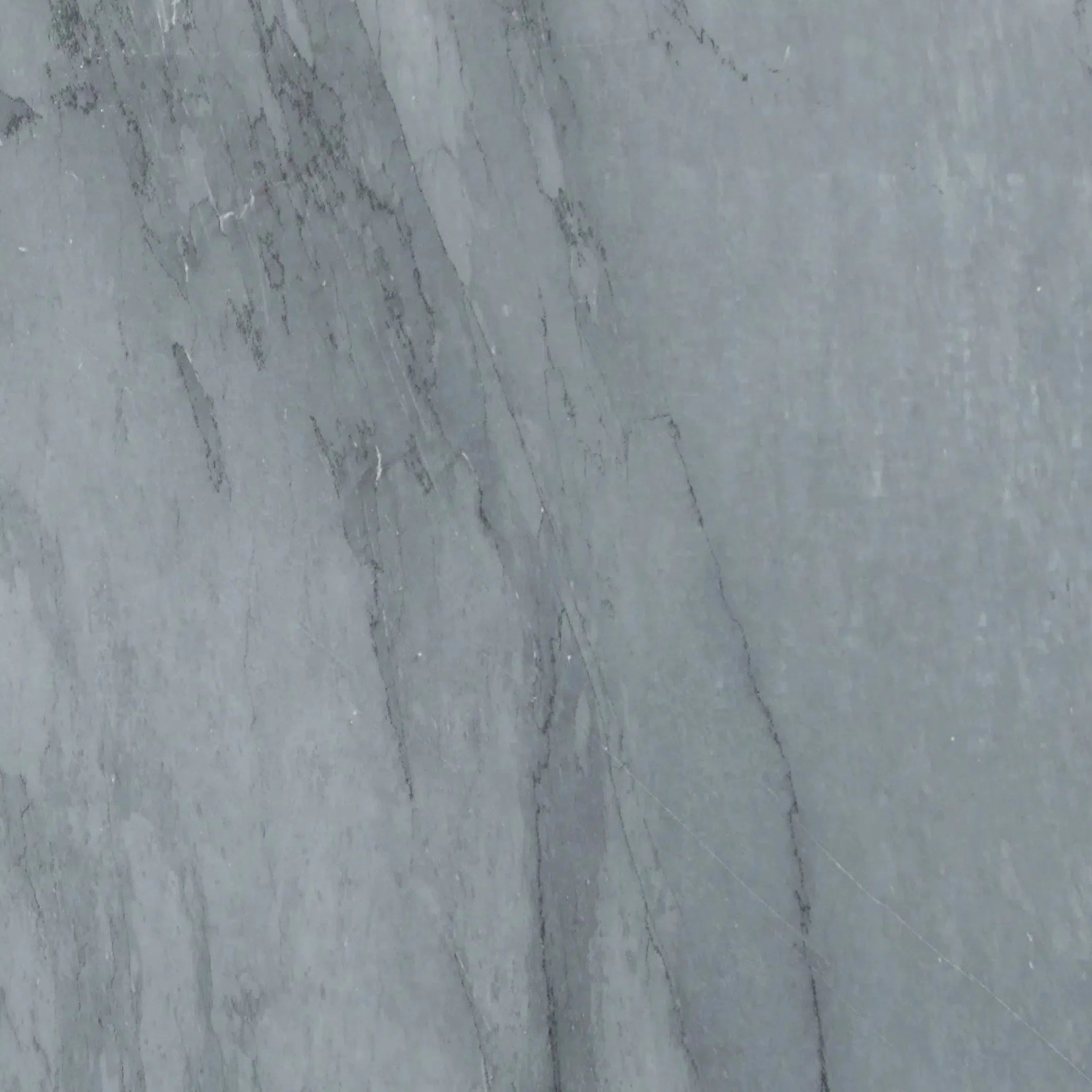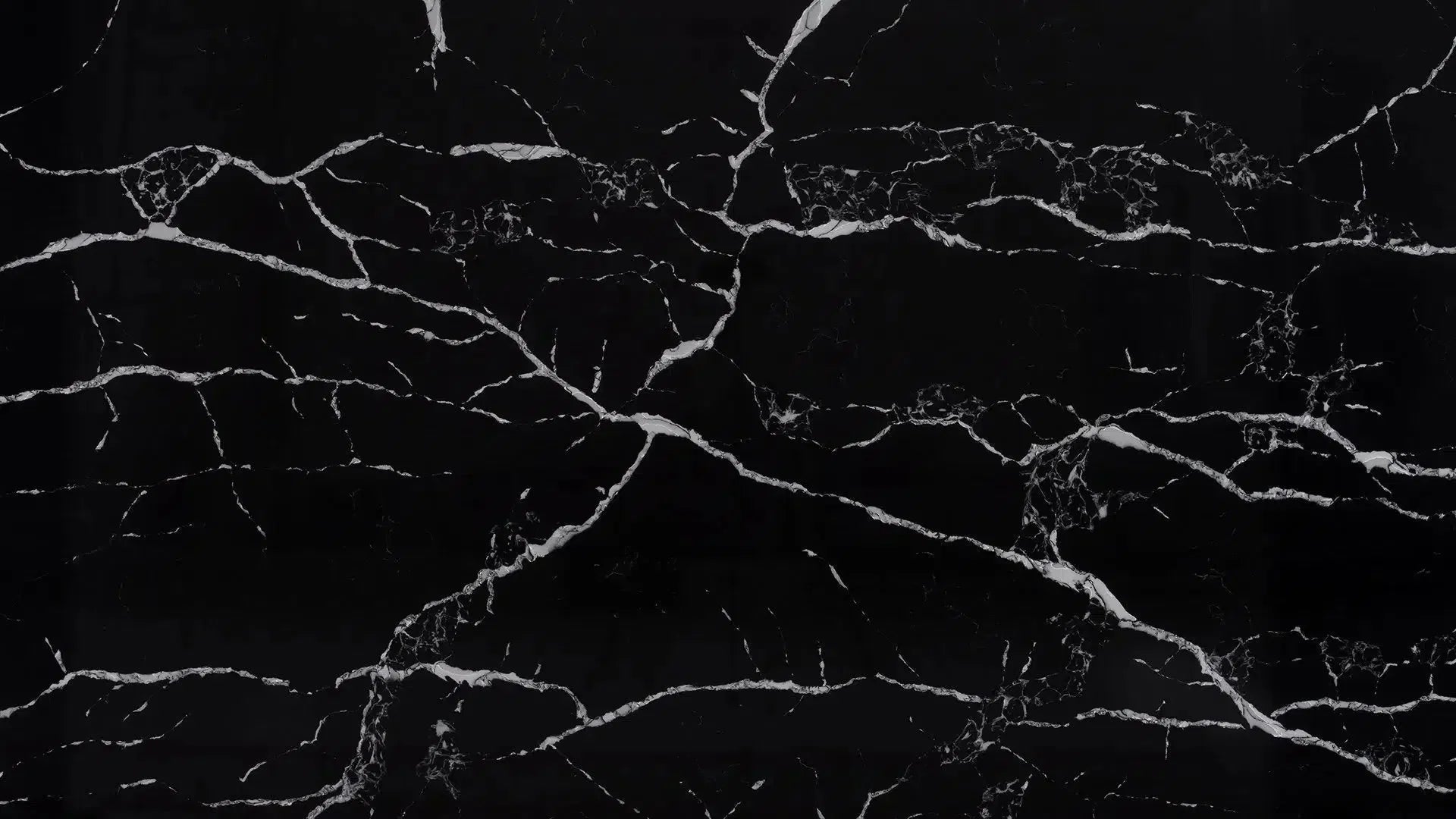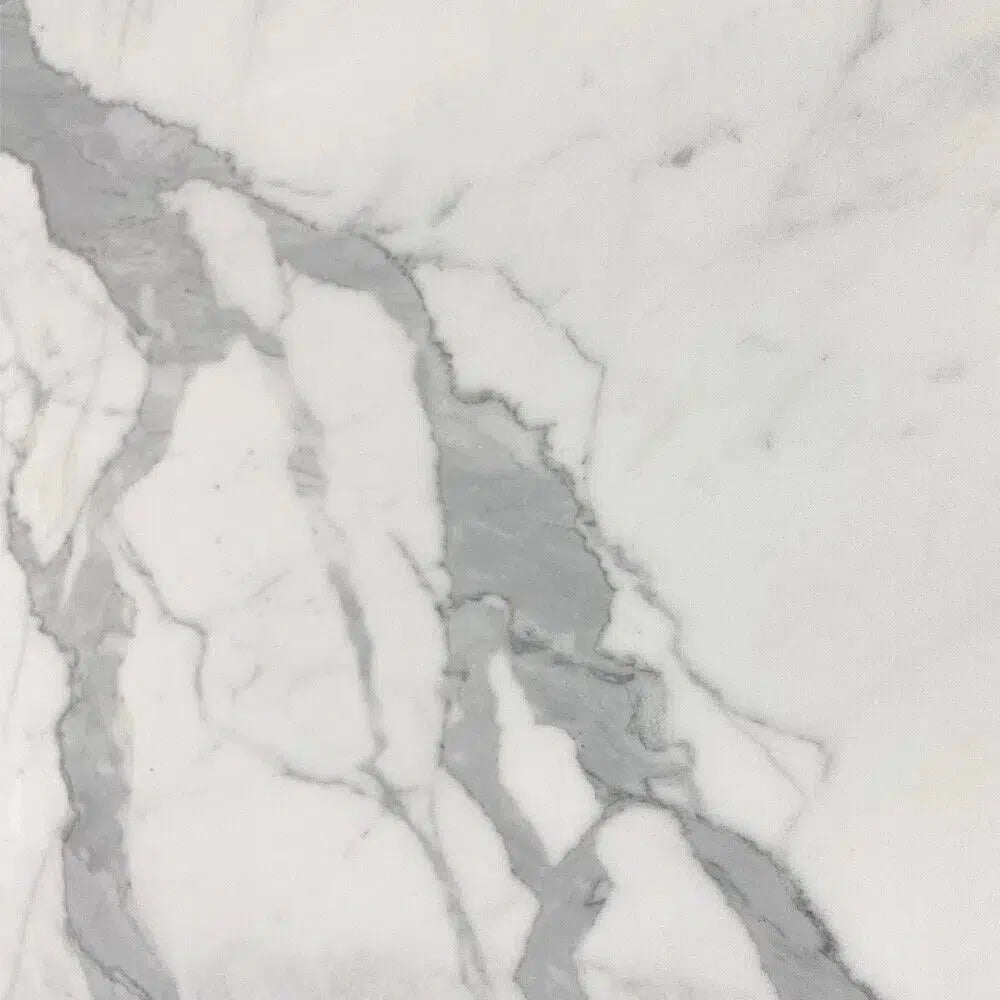Thinking about a home refresh? Maybe you've seen those beautiful arabesque tiles and wondered if they'd work for you. Specifically, that gorgeous arabesque tile white. It’s a look that’s been around forever but still feels super fresh. Whether you’re planning a kitchen makeover, a bathroom spa, or just want to add a little something special to your living room, this tile might be exactly what you need. Let's explore some ideas and see how this classic pattern can fit into your home.
Key Takeaways
- White arabesque tile brings a timeless elegance to any room, offering a classic pattern with a clean, bright look.
- This versatile tile works wonders in kitchens as backsplashes or on islands, and in bathrooms for shower walls or vanity areas.
- Natural stone options like marble and travertine offer unique variations and a luxurious feel, while ceramic and porcelain provide durable, low-maintenance choices.
- When styling, consider complementary color palettes, contrasting textures, and smart lighting to highlight the arabesque pattern.
- Proper installation and regular maintenance, including sealing natural stone, are key to keeping your arabesque tile white looking its best.
- White arabesque tile can add significant perceived value and appeal to your home, making it a desirable feature for potential buyers.
- Exploring different shades of white, from pure white to soft creams, allows for subtle customization to match your desired aesthetic.
- From feature walls to unique accent pieces, white arabesque tile offers many creative applications beyond standard flooring and backsplashes.
Elevate Your Space With White Arabesque Tile
White arabesque tile brings a unique blend of classic design and modern appeal to any home. Its distinctive shape, reminiscent of a graceful, elongated quatrefoil, adds an artistic touch that stands out. This pattern isn't just about looks; it's about creating a feeling, a certain atmosphere in your home.
The Timeless Appeal of White Arabesque
There's something about the arabesque pattern that just feels right, no matter the era. It’s been around for ages, showing up in architecture and art across different cultures. When you use it in white, it feels fresh and clean, but still carries that historical weight. It’s a design choice that doesn't really go out of style. It’s a way to add character without being trendy.
Understanding the Arabesque Pattern
The arabesque itself is a flowing, intricate pattern. Think of it as a stylized, curved floral motif or a complex geometric design that often repeats. It’s not a simple square or rectangle; it has curves and points that give it movement. In tile form, this pattern can be used individually or repeated to cover a surface, creating a visually interesting texture.
Why Choose White for Your Arabesque Tiles
White is a fantastic color for any tile, but especially for a pattern like arabesque. It makes the pattern pop without being overwhelming. White also reflects light really well, making spaces feel bigger and brighter. It’s a neutral color, so it works with pretty much any other color you might have in your decor. Plus, white just looks clean and sophisticated.
The Versatility of White Arabesque
What’s great about white arabesque is how adaptable it is. You can use it in a kitchen backsplash, a bathroom shower, or even as a feature wall in a living room. It can lean modern, traditional, or even a bit bohemian, depending on how you style it. It’s a tile that can really adapt to your personal taste and the overall look of your home. We offer handpicked A+ top-quality stone that fits any project.
Creating a Serene Atmosphere
White, by its nature, is calming. When you combine that with the flowing lines of the arabesque pattern, you get a sense of peace. It’s perfect for bathrooms or bedrooms where you want to create a relaxing vibe. Imagine stepping into a space that feels like a quiet escape – that’s what white arabesque can do.
Adding a Touch of Sophistication
Even though white is simple, the arabesque pattern itself adds a layer of complexity and elegance. It looks intentional and well-thought-out. It’s a step up from plain subway tiles, offering a more decorative and refined look. This tile can make even a simple space feel a bit more luxurious. You can find beautiful porcelain mosaic tile that captures this elegance.
The Enduring Charm of Natural Stone
When you choose white arabesque in natural stone, like marble or travertine, you get an added layer of beauty. Each piece of natural stone has unique veining and subtle color variations, making your installation one-of-a-kind. It brings a connection to nature indoors and adds a sense of lasting quality. We don’t sell commercial grade — only premium natural stone.
Designing with White Arabesque Tile
When planning your design, think about where you want the arabesque to be the star. It can be a bold statement on a large wall or a subtle detail in a smaller area. Consider the grout color too; a contrasting grout can make the pattern stand out more, while a matching grout creates a softer, more blended look. The possibilities are quite extensive for U.S. projects.
Kitchen Design Ideas Featuring White Arabesque Tile
White Arabesque tile can really change how your kitchen feels. It’s a classic pattern that looks good in almost any kitchen, whether you’re going for something modern or more traditional. It brings a bit of elegance without being too much.
Stunning Backsplash Possibilities
The backsplash is a prime spot for white Arabesque tile. It’s a great way to add a decorative touch that’s also practical. Think about how it will look behind your sink or stove. A white marble Arabesque backsplash can make even a simple kitchen feel like a high-end restaurant kitchen. It catches the light nicely and adds a bit of sparkle.
- Adds visual interest to a functional area.
- Easy to clean compared to some other materials.
- Creates a focal point that draws the eye.
Creating a Focal Point Behind the Stove
Your stove area is often the heart of the kitchen, so making it stand out makes sense. Using white Arabesque tile here can really make that spot pop. You can go for a solid tile pattern or mix it with other materials for a unique look. It’s a way to show off your style right where the cooking happens.
White Arabesque on Kitchen Islands
Don't forget the kitchen island! Covering the sides or even the countertop of your island with white Arabesque tile can create a beautiful contrast with your main countertops. It adds texture and a touch of luxury. It’s a great way to make your island a real showpiece in the room.
Complementing Cabinetry and Countertops
White Arabesque tile is super flexible when it comes to pairing with other kitchen elements. It looks fantastic with dark wood cabinets for a strong contrast, or with light wood or white cabinets for a brighter, more airy feel. For countertops, it works well with granite, quartz, or even butcher block. The key is to balance the pattern of the tile with simpler surfaces elsewhere.
Achieving a Bright and Airy Kitchen
White is a color that naturally makes spaces feel bigger and brighter. Using white Arabesque tile, especially in a smaller kitchen, can really open up the space. It reflects light well, making the whole room feel more cheerful and less cramped. It’s a smart choice if you want your kitchen to feel light and welcoming.
The Luxury of Marble Arabesque in the Kitchen
If you want to add a serious touch of luxury, white marble Arabesque is the way to go. Marble has natural veining that makes each tile unique. It looks sophisticated and timeless. While it does require a bit more care, the beauty it brings to a kitchen is undeniable. It’s a material that truly speaks of quality and elegance.
Durability and Maintenance Considerations
When thinking about kitchen tiles, durability is important. Ceramic and porcelain Arabesque tiles are very tough and easy to maintain, making them great for busy kitchens. Natural stone like marble or travertine is also durable but might need sealing to protect against stains and moisture. Regular cleaning with a mild cleaner will keep your Arabesque looking its best for years.
Seamlessly Integrating White Arabesque
To make your white Arabesque tile look its best, think about the grout. Using a grout color that matches the tile can create a more uniform, modern look. If you want the pattern to stand out more, a contrasting grout color can work too. Proper installation is key to making sure the pattern flows nicely and the overall look is polished and professional. We offer handpicked A+ top-quality natural stone products, and our direct importer advantage means you get premium quality without the markup. All our shipments come with insured shipping for your peace of mind.
Bathroom Elegance With White Arabesque Tile
White Arabesque tile can really change the feel of a bathroom. It’s a classic look that just works, making spaces feel cleaner and more open. Whether you're going for a full spa vibe or just want a touch of luxury, this tile pattern is a solid choice. It’s not just about looks, either; when you pick the right material, it holds up well in a bathroom environment.
Transforming Shower Walls
Using white Arabesque tile on your shower walls can make your shower feel like a personal retreat. Imagine stepping into a space that feels bright and clean every day. It’s a great way to add visual interest without being too busy. The pattern itself is decorative, so you don’t need a lot of extra adornments. This tile can turn a simple shower into a standout feature.
Creating a Luxurious Vanity Area
The area around your vanity is often a focal point in the bathroom. White Arabesque tile here adds a touch of sophistication. It reflects light well, making the space feel larger and more inviting. It’s a nice contrast to typical flat tiles and gives a more custom, high-end feel. It’s a simple change that makes a big difference.
Floor Applications for a Cohesive Look
While often seen on walls, white Arabesque tile can also work on bathroom floors, especially in powder rooms or guest bathrooms where heavy traffic might be less of a concern. Using it on both walls and floors can create a really unified and dramatic look. If you’re using natural stone like marble, make sure it’s properly sealed for floor use to prevent slips and stains.
Accents and Borders With Arabesque
If a full Arabesque installation feels like too much, consider using it as an accent. A border around a plain tile shower or a decorative niche can add that special touch. This approach lets you enjoy the pattern’s beauty without overwhelming the space. It’s a smart way to incorporate the design if you’re working with a tighter budget or prefer a more subtle look.
The Serenity of a White Marble Bathroom
When you choose white marble for your Arabesque tiles, you’re bringing a piece of natural art into your bathroom. Marble has unique veining that makes each tile one-of-a-kind. This adds depth and character that other materials just can’t match. A white marble Arabesque bathroom truly feels serene and upscale.
Pairing White Arabesque With Fixtures
White Arabesque tile is quite adaptable when it comes to fixtures. It looks great with classic chrome, modern brushed nickel, or even bold black hardware. The clean white background allows your chosen fixtures to really pop. Think about the overall style you want – minimalist, traditional, or modern – and pick fixtures that complement the tile’s elegant pattern.
Water Resistance and Longevity
When selecting white Arabesque tile for a bathroom, material choice is key. Ceramic and porcelain are excellent choices for bathrooms due to their low water absorption rates and durability. If you opt for natural stone like marble or travertine, proper sealing is absolutely necessary to protect against moisture and staining. Regular sealing is vital for the longevity of natural stone in wet areas.
Designing a Spa-Like Retreat
To create that spa-like atmosphere, pair your white Arabesque tile with soft lighting, plush towels, and perhaps some natural wood accents. The pattern itself has a calming, almost meditative quality. It’s a design choice that promotes relaxation and tranquility, turning your bathroom into a personal sanctuary. It’s about creating a space that feels both beautiful and functional.
Living Areas Adorned With White Arabesque Tile
White arabesque tile isn't just for kitchens and bathrooms; it can bring a unique elegance to your main living spaces too. Think about how a touch of this classic pattern can change the feel of a room. It’s a way to add character without being too loud.
Feature Walls That Captivate
Creating a feature wall with white arabesque tile can really make a statement. Imagine a wall behind your sofa or a prominent wall in a dining room. It draws the eye and adds a layer of texture and visual interest that paint or wallpaper just can't match. This approach works especially well if you're going for a more sophisticated look. The intricate pattern provides a subtle yet impactful design element.
Fireplace Surrounds With Artistic Flair
Your fireplace is often a focal point, and dressing it up with white arabesque tile can make it truly spectacular. It adds a touch of old-world charm and artistry, turning a functional element into a piece of decor. It’s a great way to bring a bit of that luxury natural stone you can trust feel right into the heart of your home. You can choose a polished finish for a glamorous look or a matte finish for something more subdued.
Creating Elegant Entryways
First impressions matter, and your entryway is the first thing guests see. Using white arabesque tile on an entryway floor or as a decorative wall panel can set a tone of refined taste from the moment someone steps inside. It’s a way to welcome people with style and a hint of exotic flair, perhaps reminiscent of Moroccan-style tiles.
Incorporating Arabesque in Accent Areas
Sometimes, you don't need to tile an entire wall or floor. Consider using white arabesque tiles in smaller, strategic areas. This could be around a doorway, as a decorative border, or even as a small inset panel. These accents can provide a sophisticated touch without overwhelming the space. It’s about using the pattern thoughtfully to draw attention to specific features.
The Sophistication of Natural Stone
When you choose white arabesque tiles made from natural stone like marble or travertine, you're bringing in a material with inherent beauty and character. Each piece is unique, with subtle variations in veining and tone. This natural variation adds depth and a sense of authenticity that manufactured materials often lack. It’s a choice that speaks to quality and timeless design.
Balancing Pattern and Simplicity
Working with a patterned tile like arabesque means you need to think about balance. If you have a busy arabesque feature wall, keep the rest of your decor simpler. This allows the tile to shine without making the room feel cluttered. Conversely, if you use arabesque in a more subtle way, you might have room for bolder decor choices elsewhere. It’s a design dance that requires a bit of thought.
Enhancing Natural Light With White Tiles
White surfaces, especially those with a slight sheen like polished stone, are excellent at reflecting light. Using white arabesque tiles in your living areas can help make the space feel brighter and more open. This is particularly beneficial in rooms that don't get a lot of natural sunlight. The pattern itself can also play with light and shadow, adding dimension.
A Timeless Choice for Modern Homes
While the arabesque pattern has historical roots, its clean lines and elegant form make it surprisingly versatile for modern interiors. It bridges the gap between classic and contemporary. This timeless appeal means your design choices will likely stand the test of time, avoiding the need for frequent updates. It’s an investment in lasting style for your U.S. projects.
Outdoor Spaces Enhanced by White Arabesque Tile
Bringing the elegance of white Arabesque tile outdoors can really transform your patio, pool area, or even an outdoor kitchen. It’s a way to extend the sophisticated feel of your home into your exterior spaces, making them feel more like a true extension of your living area.
Patio and Decking Applications
Imagine stepping out onto a patio paved with white Arabesque tiles. It creates an immediate sense of luxury and calm. These tiles can make a simple patio feel like a high-end resort. They offer a beautiful, intricate pattern that stands out from typical outdoor flooring. It’s a great way to add visual interest to an area where you might just be relaxing or entertaining guests.
Creating Inviting Pool Surroundings
Surrounding your pool with white Arabesque tile is a fantastic idea. It gives a clean, bright look that complements the water. The pattern adds a touch of artistry, making your pool area feel more like a private oasis. It’s a step up from plain concrete or standard pavers, offering a more refined aesthetic.
Weather Resistance and Durability
When choosing tiles for outdoor use, durability is key. Natural stone options like marble or travertine, when properly sealed, hold up well against the elements. They can handle sun, rain, and temperature changes. Of course, regular maintenance is needed to keep them looking their best, but the longevity is certainly there.
The Beauty of Natural Stone Outdoors
Using natural stone like marble or travertine for your outdoor projects brings an authentic, high-quality feel. Each piece has its own unique veining and character, meaning your design will be one-of-a-kind. It’s a material that ages gracefully and adds a timeless appeal to any outdoor setting.
Designing Chic Outdoor Kitchens
White Arabesque tile can be a stunning choice for outdoor kitchen backsplashes or even countertops. It adds a decorative element that makes the space feel more intentional and stylish. It’s a way to bring the same level of design consideration you’d give your indoor kitchen to your outdoor cooking area.
Complementing Landscape Features
The clean, bright look of white Arabesque tile works well with greenery and natural landscaping. It provides a neutral yet decorative base that allows your plants, flowers, and trees to really pop. It can tie together different elements of your garden or yard, creating a more cohesive outdoor environment.
Maintaining the Pristine Look
Keeping outdoor tiles looking good involves a bit of care. Regular sweeping to remove debris is important. For natural stone, periodic sealing helps protect against stains and moisture. Addressing spills quickly will help maintain that pristine white appearance. It’s about consistent, simple care rather than intensive work.
An Elegant Touch for Exterior Designs
Adding white Arabesque tile to your exterior design is a way to make a statement. It shows attention to detail and a preference for quality. Whether it's a pathway, a patio, or around a water feature, this tile choice brings a level of sophistication that’s hard to match. It’s a smart way to add lasting beauty and value to your home's exterior.
Choosing the Right White Arabesque Tile Material
When you're looking at white arabesque tiles, the material they're made from really matters. It affects how they look, how they feel, and how they hold up over time. It's not just about the pretty pattern; it's about the substance behind it.
The Allure of White Marble Arabesque
White marble arabesque tiles bring a classic kind of luxury to any space. Think of those old-world palaces or fancy bathrooms – marble is often the star. Each piece of marble is unique, with its own subtle veining and color variations. This means your arabesque pattern will be one-of-a-kind. Marble is known for its cool, smooth feel and its ability to take a beautiful polish. It can make a kitchen backsplash or a bathroom wall feel really special. However, marble is a natural stone, so it needs a bit more care. It can be prone to etching from acids (like lemon juice or vinegar) and staining if not sealed properly. But if you treat it right, it looks amazing for years.
The Subtle Elegance of Travertine
Travertine offers a softer, more earthy elegance compared to marble. It has a naturally textured surface, often with small pits and pores that give it a rustic charm. This texture can add a unique dimension to the arabesque pattern, making it feel more grounded and natural. Travertine is generally a bit more durable and less prone to etching than marble, making it a practical choice for busy areas. It comes in various shades of white and cream, often with warm undertones that can complement many decor styles. If you're going for a look that's sophisticated but also comfortable and inviting, travertine is a great option.
The Purity of Ceramic and Porcelain
Ceramic and porcelain tiles are fantastic options if you want the arabesque look without the upkeep of natural stone. These man-made materials are incredibly versatile. They can be designed to mimic the look of marble or travertine very convincingly, often at a lower price point. Porcelain, in particular, is very dense and non-porous, making it highly resistant to water, stains, and scratches. This makes it ideal for high-traffic areas like kitchen floors or shower walls. Ceramic is also a good choice, though it's typically a bit softer and more porous than porcelain. Both are great for achieving a clean, consistent look across your project.
Understanding Natural Stone Variations
When you choose natural stone like marble or travertine for your arabesque tiles, you're embracing the beauty of nature's imperfections. No two slabs are exactly alike. You'll see variations in color, veining, and texture. This is part of what makes natural stone so appealing – it has character. However, it's important to be aware of this when planning your project. You might want to order extra tiles to account for matching patterns or to have spares. Always inspect your tiles upon arrival to ensure they meet your expectations for quality and appearance.
The Benefits of Handpicked A+ Quality
When you're investing in your home, you want materials that look good and last. That's where choosing handpicked A+ quality stone makes a difference. We don't deal in commercial-grade stuff; we focus on premium natural stone. This means you're getting tiles that have been carefully selected for their beauty, consistency, and durability. It's about getting the best possible material for your project, something that truly reflects quality and adds lasting value to your home. It’s the kind of material that makes a statement.
Direct Importer Advantage for Premium Stone
Being a direct importer means we cut out the middlemen. We source our stone directly from quarries around the world. This allows us to maintain strict quality control and offer you truly premium products at better prices. You get authentic, high-quality natural stone without the extra markups. It’s a more straightforward way to get the luxury materials you want for your U.S. projects. We can ensure the consistency and quality you expect from top-tier stone.
Ensuring Authenticity and Value
When you're buying natural stone, you want to be sure it's the real deal. Authenticity matters, not just for the look but for the long-term value it adds to your home. We stand behind the quality and authenticity of our handpicked A+ natural stone. This commitment means you can trust that you're getting genuine marble or travertine, not a lesser imitation. It's an investment in materials that will look beautiful and perform well for years to come.
Selecting the Perfect Finish
The finish on your white arabesque tile can dramatically change its appearance and how it performs. Common finishes include polished, honed, and tumbled.
- Polished: This gives a high-gloss, reflective surface that really makes the colors and veining pop. It’s very elegant but can be more prone to showing scratches and water spots.
- Honed: A honed finish is smoother than natural stone but has a matte or satin sheen, not a high gloss. It’s more forgiving with daily use and offers a softer look.
- Tumbled: This finish gives the tiles a worn, aged appearance, with softened edges. It’s great for a more rustic or traditional style.
Choosing the right finish depends on the look you want and the area where the tile will be installed. For example, a polished finish might be stunning in a low-traffic powder room, while a honed finish could be better for a busy kitchen floor.
Styling and Decorating With White Arabesque Tile
White arabesque tile isn't just a material; it's a design statement. Its intricate, flowing pattern brings a sense of artistry to any room, but how do you make it truly shine? It's all about the details – the colors you pair it with, the textures you introduce, and the overall mood you want to create. Think of it as the foundation for your style.
Complementary Color Palettes
When working with white arabesque, you have a lot of freedom. For a truly serene space, stick to other light, neutral tones. Think soft grays, muted blues, or even pale greens. These colors won't compete with the tile's pattern but will instead create a calm, cohesive look. If you're aiming for something bolder, don't shy away from contrast. Deep navy, charcoal gray, or even black can make the white tile pop, adding a dramatic flair. The key is balance; let the arabesque be the star, but support it with thoughtful color choices.
Mixing Textures for Depth
To keep your white arabesque design from feeling flat, play with different textures. Imagine pairing smooth, glossy arabesque tiles with rough, natural wood elements. Or perhaps combine the tile with plush velvet upholstery or chunky knit throws. This contrast adds visual interest and makes the space feel more inviting and layered. Even small touches, like a woven basket or a metallic accent, can make a big difference.
Furniture and Decor Pairings
Your furniture and decor should complement, not clash, with the arabesque pattern. For a classic look, consider furniture with clean lines and simple silhouettes. This allows the tile to be the focal point. If you're going for a more eclectic vibe, mix and match. A vintage armchair next to a sleek, modern console table can create an interesting dynamic. Don't forget accessories! Plants add a touch of life, while artwork can introduce pops of color and personality.
Lighting to Enhance the Pattern
Lighting plays a huge role in how the arabesque pattern is perceived. Natural light is always best, as it highlights the tile's details and makes the space feel open and airy. In areas with less natural light, use layered artificial lighting. Think ambient lighting from overhead fixtures, task lighting where needed (like under cabinets), and accent lighting to draw attention to specific features. Strategic lighting can make your white arabesque tile truly sparkle.
Creating Contrast With Darker Elements
While white is the star, introducing darker elements can really make it stand out. This could be as simple as dark grout for your arabesque tiles, creating a more defined pattern. Or, consider dark wood cabinetry, black metal hardware, or even a dark-colored rug. These darker accents ground the space and prevent it from feeling too washed out. It's a classic design trick that works wonders with white tiles.
The Minimalist Approach
If you love a clean, uncluttered look, white arabesque tile is perfect. Keep your color palette simple, stick to furniture with minimal ornamentation, and let the tile's natural beauty speak for itself. This approach creates a sense of calm and order, making your space feel like a peaceful sanctuary. It’s about quality over quantity, letting the elegant pattern be the main decorative element.
Bohemian Chic With Arabesque
Who says arabesque can't be bohemian? Mix your white tiles with rich, earthy tones, natural materials like rattan and macrame, and plenty of plants. Layering textiles, like patterned rugs and throw pillows, adds to the eclectic, lived-in feel. It’s a more relaxed, artistic take on the classic pattern, proving its versatility. You can even find inspiration in glossy white beveled arabesque tile for a unique twist.
Achieving a Cohesive Design Scheme
To tie everything together, think about repeating elements throughout the room. If you have a metallic accent in your lighting, echo it in your hardware or decor. If you choose a specific color for your accent pieces, bring it into your artwork or textiles. This repetition creates a sense of harmony and makes the entire design feel intentional and well-put-together. It’s about creating a unified look that feels both stylish and comfortable.
Installation and Maintenance of White Arabesque Tile
Putting in white Arabesque tile might seem like a big job, but with the right approach, it’s totally doable. Whether you're a seasoned DIYer or thinking about hiring a pro, understanding the process makes all the difference. Getting it right means your beautiful tiles will look great for years.
Professional Installation Recommendations
For a truly flawless finish, especially with intricate patterns like Arabesque, professional installation is often the way to go. Pros have the tools and experience to handle tricky cuts and ensure a perfectly level surface. They know how to work with different adhesives and grouts to get the best bond and appearance. Hiring a professional can save you time and prevent costly mistakes. They can also advise on the best materials for your specific project, like the right type of thin-set mortar for natural stone.
DIY Installation Considerations
If you're up for the challenge, DIY installation can be very rewarding. First, make sure you have all your tools ready: a tile saw (wet saws are best for natural stone), trowels, spacers, a level, and safety gear. Proper preparation is key. This means ensuring your subfloor is clean, dry, and level. You'll want to plan your layout carefully before you start applying any adhesive. Take your time measuring and cutting each piece. For a detailed guide on the steps involved, check out this resource on how to install tiles.
Proper Grouting Techniques
Grouting fills the gaps between tiles, adding stability and a finished look. For white Arabesque, you have choices. A color-matched grout can create a very subtle, almost seamless appearance, making the pattern really pop. Contrasting grout, like a soft grey or even a dark charcoal, can define each tile and add a graphic element. Whichever you choose, mix the grout according to the manufacturer's instructions – consistency is important. Apply it evenly, pressing it into the joints. Clean off the excess grout with a damp sponge before it hardens completely.
Sealing Natural Stone Tiles
Most natural stone tiles, including marble and travertine Arabesque, need to be sealed. Sealing protects the stone from stains and moisture. It's usually recommended to seal the tiles before grouting and then again after the grout has cured. You'll want to use a quality penetrating sealer designed for natural stone. Apply it evenly with a brush or roller, let it soak in for the recommended time, and then wipe off any excess. Re-sealing is typically needed every 1-3 years, depending on traffic and cleaning habits.
Daily Cleaning and Care
Keeping your white Arabesque tiles looking their best is pretty straightforward. For daily cleaning, a soft broom or a vacuum cleaner with a soft brush attachment works well to remove dust and debris. Avoid abrasive cleaners or scrub brushes, as these can scratch the surface, especially with polished finishes. A pH-neutral cleaner mixed with warm water is usually sufficient for most messes. Always wipe up spills promptly, especially acidic ones like wine or lemon juice, which can etch natural stone.
Addressing Stains and Spills
Accidents happen, but with natural stone, quick action is best. For fresh spills, blot them up immediately with a clean cloth. If a stain does set in, you might need a poultice. A poultice is a paste made from an absorbent material (like baking soda or diatomaceous earth) and a cleaning agent. You apply it to the stain, cover it with plastic wrap, and let it sit for 24-48 hours to draw the stain out of the stone. Different types of stains require different cleaning agents in the poultice.
Long-Term Preservation Strategies
To keep your white Arabesque tile looking beautiful for the long haul, think about preventative measures. Use doormats at entrances to catch dirt and grit before it's tracked onto the tiles. Consider using coasters under glasses and trivets under hot dishes, especially in kitchens and dining areas. For high-traffic areas, a periodic re-sealing (as mentioned earlier) is a good idea. Also, be mindful of harsh chemicals; stick to gentle, stone-safe cleaning products.
Ensuring Longevity and Beauty
Ultimately, the longevity and beauty of your white Arabesque tile installation come down to a combination of quality installation and consistent, proper care. By understanding the material and following these maintenance tips, you can maintain that pristine look and enjoy the elegance of your Arabesque tiles for many years to come. If you're planning an installation, remember that proper preparation is key to a lasting result, and resources like this guide on tile installation basics can be very helpful.
The Impact of White Arabesque Tile on Home Value
When you're thinking about home improvements, especially those involving tile, it's smart to consider how they might affect your property's worth. White arabesque tile isn't just about looks; it's an investment that can genuinely boost your home's appeal and market value. It’s a choice that speaks to quality and timeless style, which buyers really notice.
Adding Perceived Luxury and Quality
White arabesque tiles, particularly those made from natural stone like marble, immediately signal a higher level of quality and luxury. The intricate pattern itself is visually appealing, and the clean white color makes spaces feel more open and sophisticated. This perceived luxury translates directly into a higher valuation for your home. Buyers often associate detailed tile work and premium materials with well-maintained and high-end properties.
The Appeal of Natural Stone Features
Natural stone, like the marble often used for arabesque tiles, has an inherent appeal that manufactured materials can't quite replicate. Each piece is unique, with its own veining and subtle color variations. This natural beauty is a significant selling point. Properties featuring genuine stone elements are often seen as more durable and valuable. For instance, a stunning marble arabesque backsplash in the kitchen or a shower surround in the bathroom can be a major draw for potential buyers looking for premium natural stone.
Timeless Design for Broad Market Appeal
While trends come and go, the arabesque pattern, especially in a classic white, has a timeless quality. It bridges the gap between traditional elegance and modern sensibilities. This broad appeal means your home will attract a wider range of buyers, from those who appreciate classic design to those looking for a clean, contemporary aesthetic. A design that doesn't feel dated is always a plus when it comes time to sell.
Creating Memorable and Desirable Spaces
White arabesque tile has a way of making spaces memorable. Whether it's a striking kitchen backsplash, an elegant bathroom floor, or a captivating feature wall, the pattern draws the eye and creates a focal point. These memorable design elements can make a home stand out in a crowded market, leaving a lasting positive impression on potential buyers. It’s about creating spaces that people can easily envision themselves living in and enjoying.
The Investment in Premium Materials
Choosing high-quality materials like handpicked A+ top-quality marble or porcelain arabesque tiles is an investment. While these might have a higher upfront cost compared to basic options, their durability and aesthetic appeal contribute to long-term value. Unlike trendy finishes that might need updating, a classic white arabesque design is likely to remain stylish for years. Understanding tile pricing helps in making informed decisions about where to invest for the best return.
Enhancing Curb Appeal and Interior Aesthetics
While arabesque tile is often used indoors, its impact on overall home value starts even before someone steps inside. A well-designed entryway featuring arabesque tile can set a tone of elegance. Inside, consistent use of high-quality tile throughout key areas like the kitchen and bathrooms significantly elevates the interior aesthetic. It shows attention to detail and a commitment to creating a beautiful living environment.
A Statement of Sophistication
White arabesque tile is more than just a decorative element; it's a statement. It communicates a sense of sophistication and refined taste. This is particularly true when the tile is installed with care and paired with complementary design elements. Homes that exude sophistication are often perceived as more valuable and desirable.
Boosting Resale Value With Elegant Finishes
Ultimately, the goal of many home renovations is to increase resale value. White arabesque tile, with its blend of classic beauty, perceived luxury, and durability, is a smart choice for achieving this. It offers a significant return on investment by making your home more attractive to buyers and justifying a higher asking price. It’s a way to add lasting elegance that pays off.
Exploring Different Shades of White Arabesque
When you think of white arabesque tile, you might picture one single shade, but there's actually a whole spectrum to consider. It’s not just about the pattern; the subtle variations in white can really change the feel of your space. Choosing the right shade of white is just as important as the pattern itself.
Crisp Pure White Variations
Pure white arabesque tiles offer a clean, bright look. They reflect light really well, making rooms feel bigger and more open. This shade is great for a modern, minimalist vibe. It’s a bold choice that makes a statement without being overwhelming. Think of it as a blank canvas, ready for your personal touch.
Soft Off-White and Cream Tones
If pure white feels a bit too stark, off-white and cream shades offer a warmer, softer alternative. These tones can bring a cozy, inviting feel to a room. They work particularly well with natural materials like wood or rattan. Cream arabesque tiles can add a touch of vintage charm or a more relaxed, organic feel to your design. They're a bit more forgiving with everyday wear too.
Subtle Veining in White Marble
For those who love the look of natural stone, white marble arabesque tiles are a popular choice. Even within white marble, you'll find variations. Some have very faint, almost invisible veining, while others might have more pronounced grey or even subtle gold streaks. This natural variation adds depth and character. It’s this unique veining that makes each marble tile one-of-a-kind.
The Nuances of Natural Stone Hues
Natural stone, like marble or travertine, comes with its own set of color nuances. You might see slight differences from one batch to another, or even within the same box. This isn't a flaw; it's part of the beauty of using natural materials. Understanding these variations helps you appreciate the authentic character of your Arabesque tiles.
Achieving a Consistent Look
To get a consistent look, especially with natural stone, it's a good idea to mix tiles from several boxes before installation. This allows you to blend any slight color differences. Your installer can help lay them out to create a balanced appearance across the entire surface. This step is key for a polished finish.
Visualizing Different White Undertones
Whites can have different undertones – some lean slightly blue, others yellow, and some are more neutral. This can affect how the tile looks next to other colors in your room. For example, a white with a cool, blue undertone might look best with grey or silver accents, while a warmer, yellow-toned white pairs well with brass or wood.
How Light Affects White Arabesque
Natural and artificial light play a big role in how white tiles appear. A tile that looks bright white in a sunny room might appear softer or even slightly yellow in a room with less natural light. It’s a good idea to get samples and see how they look in the actual space where you plan to install them, at different times of the day. This helps avoid surprises later on.
Selecting the Ideal White Shade
When you're ready to pick your tiles, consider the overall mood you want to create. Do you want a bright, modern feel, or something more soft and traditional? Think about the other colors and materials in your home. Don't be afraid to ask for help from stone experts; they can guide you through the options. We only offer handpicked A+ top-quality natural stone products, so you know you're getting the best for your project. Our direct importer advantage means you get premium quality without the middleman markup.
Unique Applications for White Arabesque Tile
White arabesque tile is more than just a backsplash or shower wall material. Its distinctive shape and clean color lend themselves to some really creative uses around your home. Think outside the usual spots and let this elegant pattern surprise you.
Decorative Wall Paneling
Forget plain paint. Using white arabesque tiles for a feature wall panel can completely change the feel of a room. It adds texture and a subtle, artistic flair without being overwhelming. Imagine this in a dining room or a sophisticated entryway. It’s a way to bring architectural interest to a flat surface, making it a real talking point. This application turns a simple wall into a piece of art.
Stair Riser Accents
Who says stairs have to be boring? Tiling the risers (the vertical part of each step) with white arabesque can add a touch of unexpected luxury. It’s a detail that guests will notice and appreciate. It works particularly well in homes with a grand staircase, but even a smaller set of stairs can feel more special with this treatment. It’s a subtle way to introduce pattern and elegance.
Custom Shower Niches
When you're designing a shower, niches are practical for storing toiletries. But they can also be a design opportunity. Lining a shower niche with white arabesque tiles creates a beautiful, jewel-box effect. It’s a small detail that makes a big difference, adding a luxurious feel to your shower space. It’s a great way to incorporate arabesque tiles in a functional yet stylish manner.
Bar Fronts and Counter Details
If you have a home bar or a kitchen island with a prominent front, consider tiling it with white arabesque. This can create a stunning focal point. It’s a bold choice that adds a lot of character and a high-end look. It works well with modern or traditional decor, depending on the surrounding elements.
Artistic Backsplashes Beyond the Kitchen
While kitchen backsplashes are common, think about other areas. A small, decorative backsplash behind a vanity in a powder room, or even behind a freestanding tub in a master bathroom, can add a unique touch. It’s about using the tile’s inherent beauty in unexpected places to create visual interest.
Incorporating Arabesque into Furniture Design
This is where things get really creative. Imagine a custom-made console table or a side table with a white arabesque tile inlay. It’s a way to bring the pattern into your living space in a truly unique, furniture-focused way. This requires skilled craftsmanship but results in a one-of-a-kind piece.
Creating Statement Entryway Floors
While often seen on walls, using white arabesque tiles for a small entryway floor can make a grand first impression. A defined area, perhaps bordered by a different material, can showcase the pattern beautifully. It sets a tone of elegance right from the moment someone steps into your home. This is a great way to use glass arabesque tiles for a bright, clean look.
Unique Vignettes in Any Room
Sometimes, it's not about a large area. A small accent, like tiling a small section of a wall behind a piece of art, or creating a decorative border around a mirror, can add a special touch. These small, intentional uses of the tile can create memorable moments within your decor.
The Craftsmanship Behind Arabesque Tile
The Art of Tile Cutting
Creating an arabesque tile isn't just about cutting a piece of stone or ceramic; it's an art form. The distinctive shape, with its flowing curves and pointed ends, requires precision. Skilled artisans use specialized tools, often starting with a basic square or rectangular tile. They then carefully trace and cut the arabesque pattern. This meticulous process ensures each tile fits perfectly with its neighbors, forming a cohesive and beautiful mosaic. The quality of the cut directly impacts the final look and the ease of installation. For natural stone, the cutting process also needs to account for the material's unique veining and characteristics, making each piece truly one-of-a-kind.
Precision in Pattern Creation
The arabesque pattern itself is a testament to geometric artistry. Its origins trace back to Islamic art, where figurative representations were often avoided, leading to the development of intricate, non-representational designs. Achieving this pattern on a tile involves careful measurement and layout. Whether it's a simple repeating motif or a more complex arrangement, the precision in how each curve and line is rendered is key. This attention to detail is what gives arabesque its sophisticated and timeless appeal. It’s a pattern that speaks of history and thoughtful design, brought to life through careful tile work.
The Role of Skilled Artisans
Behind every stunning arabesque installation are skilled artisans. These are the individuals who translate design visions into reality. They understand the nuances of different tile materials, the best cutting techniques, and how to lay out the pattern for maximum visual impact. Their experience allows them to adapt to site-specific challenges and ensure a flawless finish. Working with a professional installer means you're benefiting from years of practice and a deep knowledge of tile setting. They are the ones who ensure those intricate patterns align perfectly and that the final surface is both beautiful and durable.
Understanding the Manufacturing Process
The journey of an arabesque tile from raw material to finished product is fascinating. For natural stone, it begins with quarrying blocks of marble, travertine, or other stones. These blocks are then cut into slabs and further processed into individual tiles. Ceramic and porcelain tiles undergo a different process involving clay mixtures, molding, firing in kilns, and glazing. The arabesque shape is typically achieved through precise cutting or by using molds during the manufacturing stage. The choice of material and manufacturing method significantly influences the tile's appearance, durability, and cost. Understanding this process helps appreciate the value and effort that goes into each tile.
The Beauty of Hand-Finished Tiles
While many arabesque tiles are machine-cut for consistency, some premium options feature hand-finished details. This can include hand-chiseled edges, subtle variations in surface texture, or even hand-painted accents. Hand-finishing adds a layer of uniqueness and artisanal charm that machine production can't replicate. It’s these small imperfections and unique touches that give a space character and a sense of bespoke luxury. If you're looking for something truly special, consider tiles that highlight this level of craftsmanship. It’s a way to bring a piece of art into your home.
Quality Control for Premium Products
Reputable manufacturers and suppliers implement rigorous quality control measures. This involves inspecting tiles for defects such as chips, cracks, color inconsistencies, or dimensional inaccuracies. For natural stone, this also includes checking for proper veining and ensuring the material meets specific grading standards. We only offer handpicked A+ top-quality natural stone products, never standard or commercial grade. This commitment to quality means you receive tiles that are not only beautiful but also perform well over time. It’s an investment in a product that will last.
From Quarry to Exquisite Tile
The transformation from a rough block of stone pulled from the earth to a polished arabesque tile ready for your home is quite a journey. It involves careful selection at the quarry, precise cutting, shaping, and finishing. For marble, the natural veining is a key feature that artisans work with to create visually appealing patterns. This direct sourcing, often by companies acting as a direct importer advantage, helps maintain quality and authenticity. It’s a process that respects the natural beauty of the material while shaping it into a functional work of art for your home.
Appreciating the Detail in Every Piece
When you look at an arabesque tile, take a moment to appreciate the detail. Notice the smoothness of the curve, the sharpness of the point, and if it's natural stone, the unique patterns within the material. This level of detail is a direct result of the craftsmanship involved. It’s what sets these tiles apart from more common, mass-produced options. Whether you're using them for a kitchen backsplash, a bathroom floor, or a striking feature wall, the inherent beauty and artistry of the arabesque pattern will undoubtedly add a touch of elegance to your U.S. projects. Consider how proper sealing terracotta tiles can also preserve the intricate details of natural materials.
Pairing White Arabesque With Other Materials
White arabesque tile is a chameleon in the design world. It looks great with so many different materials, which is part of why it's so popular. You can really play around with combinations to get the exact feel you want for your space.
Contrasting With Dark Wood Tones
Pairing white arabesque with dark wood creates a really striking contrast. Think of a dark walnut vanity in a bathroom or deep espresso cabinets in a kitchen. The dark wood grounds the space, while the white tile keeps it feeling bright and open. It’s a classic look that works well in both modern and traditional settings. This combination adds a lot of depth and visual interest. It’s a sophisticated choice that feels both timeless and current.
Harmonizing With Light Natural Woods
If you're going for a softer, more natural vibe, light woods are a fantastic partner for white arabesque. Imagine blonde oak flooring or light maple cabinetry. This pairing brings a Scandinavian or minimalist feel to a room. It’s all about creating a calm, airy atmosphere. The textures of the wood and the subtle pattern of the tile work together nicely. You can find some great wood-look tile color trends that would complement this style.
Accenting With Metallic Finishes
Metals can add a touch of glamour or industrial chic, depending on what you choose. Brushed nickel or chrome fixtures offer a clean, modern look that complements the purity of white arabesque. For something warmer, consider brass or gold accents. These can add a luxurious feel, especially in a powder room or a high-end kitchen backsplash. Even small touches, like cabinet hardware or lighting fixtures, can make a big difference.
Balancing With Solid Color Surfaces
Sometimes, you need to let the arabesque tile be the star. Pairing it with solid color surfaces, like a plain quartz countertop or a matte painted wall, helps prevent the pattern from becoming overwhelming. This is especially useful in smaller spaces. A simple, solid color provides a visual break and allows the intricate arabesque design to stand out without competing. It’s about finding that sweet spot where the pattern is noticed but doesn’t dominate the entire room.
Integrating With Glass Elements
Glass is another material that pairs beautifully with white arabesque. Think of glass shower doors in a bathroom, glass shelving, or even glass mosaic accents. Glass reflects light and adds a sense of spaciousness, which works perfectly with the bright nature of white tiles. It keeps the look clean and modern. This combination is great for making a bathroom feel more open and airy.
The Synergy of Stone and Tile
When working with natural stone tiles, like marble or travertine, pairing them with other natural stone elements can create a cohesive and luxurious feel. For example, a white marble arabesque tile could be complemented by a granite countertop or a limestone accent wall. This approach emphasizes the natural beauty and quality of the materials. It’s a way to build a space that feels grounded and organic.
Creating Visual Interest With Mixed Materials
Don't be afraid to mix and match! Combining different materials can lead to really unique and personalized designs. Consider using white arabesque tile as a backsplash against a brick accent wall, or as flooring with concrete-look walls. The key is to balance textures and colors so that each material has a chance to shine. This approach can make your design stand out.
Achieving a Harmonious Blend
Ultimately, the goal is to create a space that feels balanced and intentional. Whether you're drawn to the warmth of wood, the shine of metal, or the simplicity of solid colors, white arabesque tile is adaptable. It’s a versatile choice that allows you to experiment with different pairings to achieve your desired aesthetic. Remember, you can always request samples to see how different materials look together before committing to a large project. We offer handpicked A+ top-quality stone that can be sampled to ensure the perfect match.
Budget-Friendly White Arabesque Tile Solutions
Thinking white arabesque tile is out of reach for your budget? Think again! While it can sometimes feel like a luxury item, there are smart ways to incorporate this beautiful pattern without breaking the bank. It’s all about being strategic with your choices and where you decide to place it. You can get that high-end look with a little planning.
Strategic Placement for Maximum Impact
One of the best ways to save money is to use white arabesque tile as an accent rather than covering entire walls or floors. Imagine a stunning arabesque backsplash in your kitchen, or a decorative border around a plain tiled shower. This approach lets the pattern shine without requiring a huge quantity of tile. It’s a way to get that wow factor in key areas. Even a small application can make a big difference.
Considering Ceramic or Porcelain Alternatives
While natural stone like marble has its own unique charm, high-quality ceramic or porcelain tiles can offer a very similar look at a lower price point. Modern manufacturing techniques mean these tiles can mimic the appearance of natural stone quite convincingly, including the intricate veining. They are also often easier to maintain, which is a bonus.
Exploring Smaller Format Tiles
Sometimes, the size of the tile can affect the overall cost. While large format tiles can create a grand statement, smaller tiles, like classic 4x4 tiles, can sometimes be more budget-friendly. They can also be easier to work with for intricate patterns or in smaller spaces, reducing waste and installation time.
Utilizing Arabesque for Accents
Think beyond just backsplashes and floors. Arabesque tiles can be used for smaller decorative elements that add a touch of elegance without a large investment. Consider using them for:
- Stair risers
- Shower niches
- Decorative insets on a plain wall
- A small feature area around a fireplace
The Value of Direct Sourcing
When you're looking for premium natural stone, buying directly from an importer can make a significant difference in price. Companies that source directly from quarries often cut out the middleman, passing those savings onto you. This means you can get handpicked A+ quality stone for less. It’s worth looking into suppliers who are direct importers to get the best value for your money.
Smart Shopping for Premium Quality
Keep an eye out for sales or special offers from reputable tile suppliers. Sometimes, you can find excellent deals on high-quality materials if you're patient and do your research. Don't be afraid to ask about their sourcing and quality control. You want to make sure you're getting authentic, premium products even when you're trying to save money.
Remember, the goal is to achieve a luxurious look and feel. By being smart about where and how you use white arabesque tile, you can create a stunning design that fits your budget. It’s about making clever choices that highlight the beauty of the pattern without overspending.
Long-Term Value of Durable Materials
Even if the initial cost is a bit higher, investing in durable materials like porcelain or good quality natural stone can save you money in the long run. These tiles are built to last, resisting wear and tear better than cheaper alternatives. This means fewer replacements and repairs down the line, making it a wise financial decision for your home renovation project.
The Psychological Impact of White Arabesque Tile
It’s interesting how certain design choices can actually affect how we feel in a space, right? White arabesque tile isn't just about looks; it has a way of influencing the mood of a room. Think about it – that classic, flowing pattern combined with a clean white hue can really change the vibe.
Creating a Sense of Calm and Tranquility
One of the biggest impacts of white arabesque tile is its ability to make a space feel really peaceful. The gentle curves of the arabesque pattern are naturally soothing, and when you pair that with white, it just amplifies the sense of calm. It’s like a visual sigh of relief. This makes it a fantastic choice for areas where you want to unwind, like a bathroom or a quiet reading nook. The clean, uncluttered look helps clear the mind, reducing visual noise and promoting a feeling of serenity. It’s a simple way to bring a bit of zen into your home.
The Illusion of Larger Spaces
White is well-known for its light-reflecting properties, and arabesque tile, especially in a lighter shade, takes full advantage of this. When light bounces off the tile’s surface, it makes the room feel brighter and more open. This is a game-changer for smaller rooms or areas with limited natural light. The pattern itself, with its repeating, flowing lines, can also draw the eye, creating a sense of depth and making the space feel bigger than it actually is. It’s a clever trick that designers use to make compact areas feel more expansive.
Promoting Cleanliness and Purity
There’s something inherently clean about white. It’s often associated with purity and order. Using white arabesque tile can subconsciously signal a sense of cleanliness and meticulousness in your home. This can be particularly appealing in kitchens and bathrooms, where hygiene is a top concern. The visual clarity of white tile can make a space feel fresh and well-maintained, contributing to an overall sense of well-being. It’s a subtle psychological cue that can make a big difference in how you perceive your environment.
Enhancing Natural Light and Brightness
As mentioned, white tiles are fantastic at reflecting light. This means that a room adorned with white arabesque tile will feel naturally brighter, even on a cloudy day. The pattern can help diffuse light, preventing harsh glare and creating a soft, inviting glow. This is especially noticeable when paired with good lighting, like the warm white tones that work so well with white subway tile backsplashes. The more light you have, the more welcoming and cheerful a space tends to feel.
The Uplifting Effect of White
Color psychology tells us that white can have an uplifting effect. It’s often linked to new beginnings, clarity, and optimism. Incorporating white arabesque tile into your design can contribute to a more positive and energetic atmosphere in your home. It’s a way to inject a sense of lightness and positivity into your daily surroundings. This makes it a great choice for areas where you start your day or gather with family.
Fostering a Sense of Order
The structured nature of the arabesque pattern, even with its flowing lines, can create a sense of order. When tiles are laid precisely and grout lines are clean, it presents a visually organized surface. This order can translate into a feeling of calm and control within the space. It’s a subtle way that design can contribute to a more peaceful and organized mindset. This is particularly true when considering black and white tiles for a strong, defined look.
The Comfort of Familiar Patterns
Arabesque is a pattern with a long history, and there's a certain comfort in its familiarity. It’s a design that’s both exotic and classic, evoking a sense of timelessness. This familiarity can make a space feel more grounded and welcoming. It’s a pattern that people recognize and often associate with beauty and elegance, which can contribute to a feeling of comfort and contentment in your home.
Inspiring Creativity and Serenity
Ultimately, the combination of the calming effect of white and the artistic flow of the arabesque pattern can inspire both creativity and serenity. It provides a beautiful, clean backdrop that doesn't overwhelm the senses but rather invites contemplation and relaxation. This balance makes it a versatile choice for many different rooms and personal styles. If you're looking for a design element that offers both aesthetic appeal and a positive psychological impact, white arabesque tile is definitely worth considering for your next project.
Trends in White Arabesque Tile Design

White Arabesque tile isn't just a classic choice; it's constantly being reimagined. Designers and homeowners are finding fresh ways to use this beautiful pattern, keeping it relevant and exciting for modern spaces across the U.S. Let's look at what's trending right now.
Modern Interpretations of Classic Patterns
While the traditional Arabesque shape is elegant, current trends are playing with its proportions and scale. You'll see slightly elongated versions, or sometimes a more geometric, less flowing take on the classic motif. These subtle shifts give the pattern a contemporary edge without losing its inherent grace. It’s about taking something familiar and giving it a new twist.
Large Format Arabesque Tiles
Forget tiny mosaics; the trend is leaning towards larger Arabesque tiles. This approach can make a space feel more expansive and reduces the number of grout lines, creating a cleaner, more unified look. Imagine a grand entryway or a spacious shower wall covered in these larger, statement-making tiles. It really opens up the room.
Matte vs. Polished Finishes
Both finishes have their place, but matte finishes are gaining serious traction. They offer a softer, more understated elegance and can be more forgiving with everyday wear and tear, especially in high-traffic areas. Polished finishes still bring a luxurious sheen, perfect for creating a glamorous feel, but the matte look is where many are finding their modern aesthetic.
The Rise of Textured Arabesque
Beyond just the shape and finish, some manufacturers are introducing subtle textures to Arabesque tiles. This could be a slight relief in the pattern, a brushed surface, or even a crackled glaze effect. These textures add a tactile dimension and visual interest, making the tile feel more handcrafted and unique.
Integrating Arabesque in Unexpected Places
While backsplashes and shower walls are common, designers are getting creative. Think Arabesque tile used as a decorative wall panel in a living room, as accents on stair risers, or even as a chic detail on a custom bar front. It’s about using the pattern as a design element wherever you want to add a touch of artistry.
Sustainable and Eco-Friendly Options
As awareness grows, so does the demand for sustainable materials. While natural stone is inherently durable, some manufacturers are focusing on eco-friendly production processes or offering recycled content options. Look for brands that prioritize responsible sourcing and manufacturing.
Bold Grout Color Pairings
Traditionally, white Arabesque tiles are paired with white or light-colored grout to blend in. However, a growing trend is to use contrasting grout colors. A dark charcoal, deep navy, or even a bold jewel tone can make the Arabesque pattern pop, turning it into a striking graphic element. This is a great way to add personality.
The Continued Popularity of Natural Stone
Despite the availability of ceramic and porcelain, natural stone, particularly marble Arabesque, remains a top choice for those seeking authentic luxury. The unique veining and inherent beauty of stone are hard to replicate. Handpicked A+ top-quality natural stone continues to be the go-to for premium projects nationwide.
Key Trends at a Glance:
- Larger tile formats for a more open feel.
- Matte finishes offering subtle elegance.
- Textured surfaces adding tactile interest.
- Unexpected applications beyond kitchens and bathrooms.
- Contrasting grout colors for a bold statement.
- Continued preference for premium natural stone.
Designing With White Arabesque Tile for Small Spaces
Small spaces can feel a bit cramped, right? It’s a common challenge many homeowners face. But what if I told you that the right tile choice could actually make your compact areas feel much bigger and brighter? White arabesque tile is surprisingly good at this.
Maximizing Light Reflection
White is a natural light-booster. When you use white arabesque tiles, especially in a glossy finish, they bounce light around the room. This makes the space feel more open and airy. Think about how a white ceiling can make a room feel taller; it’s a similar principle. The reflective quality of the tile works wonders in areas that don't get a lot of natural light, like small bathrooms or narrow hallways. This simple trick can dramatically change the feel of a small room.
Creating an Illusion of Depth
It might sound counterintuitive, but a patterned tile like arabesque can actually add depth to a small space. The intricate design draws the eye, making the walls or floor seem further away than they are. It’s like looking at a detailed piece of art – your focus is on the pattern, not just the size of the room. This is especially true when you use a consistent color, like white, which prevents the pattern from becoming too busy and overwhelming.
Strategic Use on Walls vs. Floors
Where you place your white arabesque tile matters. For very small rooms, using it on a feature wall, like behind a vanity in a powder room or as a backsplash in a tiny kitchen, can create a focal point without overwhelming the space. If you're considering it for floors, a lighter grout can help the tiles blend together, creating a more expansive look. Using glossy porcelain mosaic tile on a shower wall can make a small bathroom feel like a luxurious retreat.
Avoiding Overcrowding the Pattern
While the arabesque pattern is beautiful, too much of a good thing can make a small space feel cluttered. The key is balance. Opt for a slightly larger arabesque tile if you're covering a significant area, as fewer tiles mean fewer grout lines, which can make a space feel more unified. Alternatively, use the tile strategically as an accent rather than covering every surface. This way, you get the visual interest without the feeling of being closed in.
The Power of a Single Statement Area
Sometimes, the best approach for small spaces is to pick one area and make it a showstopper. A stunning white arabesque backsplash in a compact kitchen or a dramatic arabesque accent wall in an entryway can provide all the style you need. This focused approach draws attention to the beautiful tilework, making the space feel intentional and well-designed, rather than just small.
Choosing the Right Scale of Arabesque
Arabesque tiles come in various sizes. For smaller rooms, consider if a smaller, more intricate pattern or a larger, more simplified version would work best. A larger tile with fewer pieces can sometimes make a space feel more open because there are fewer grout lines to break up the visual field. It’s about finding that sweet spot where the pattern is noticeable but doesn’t dominate.
Keeping Surrounding Decor Simple
To let your white arabesque tile shine in a small space, keep the rest of your decor relatively simple. Clean lines, minimalist furniture, and a neutral color palette will allow the tile to be the star. This prevents visual clutter and helps maintain that sense of openness you’re trying to create. Think of the tile as the main artwork and everything else as supporting elements.
Making Compact Areas Feel Expansive
Ultimately, the goal is to make your small space feel as large and comfortable as possible. White arabesque tile, when used thoughtfully, can achieve this. By playing with light, pattern, and strategic placement, you can transform even the coziest nook into a visually appealing and seemingly larger area. It’s a smart design choice that offers both beauty and a clever spatial illusion, proving that small spaces can indeed be stunning.
The Durability and Longevity of White Arabesque
When you're thinking about adding white Arabesque tile to your home, one of the first things that probably comes to mind is how well it's going to hold up over time. It's a big investment, after all, and you want it to look good for years to come. The good news is that Arabesque tile, especially when made from quality materials, is built to last.
Understanding Natural Stone Resilience
Many white Arabesque tiles are crafted from natural stone like marble or travertine. These materials have been used in construction for centuries for a reason – they're tough. Marble, for instance, is a metamorphic rock that's incredibly dense and hard. Travertine is also quite durable, though it has a slightly more porous nature that requires proper sealing. The inherent strength of these natural materials means they can withstand a lot of foot traffic and daily wear. This makes them a fantastic choice for areas that see a lot of action, like kitchen floors or bathroom walls.
Resistance to Wear and Tear
Compared to softer materials, natural stone Arabesque tiles offer excellent resistance to scratches and chips. While no material is completely indestructible, a well-maintained stone tile will look great for decades. Think about ancient buildings or historical sites; many still feature their original stone elements, looking as impressive as ever. This kind of longevity is hard to beat. For projects where extreme durability is a must, consider porcelain or ceramic options, which can last 10-20 years or longer.
The Importance of Proper Sealing
For natural stone tiles, sealing is key to their longevity. Sealing fills the tiny pores in the stone, making it less likely to absorb liquids and stain. It's not a one-time thing, either; you'll need to reseal periodically, depending on the type of stone and how much use the area gets. A good sealant acts like a protective shield, keeping your tiles looking pristine.
Protecting Against Stains and Moisture
Properly sealed stone is quite good at resisting common household spills. Coffee, wine, or cooking oil are less likely to cause permanent damage if wiped up promptly. In bathrooms and kitchens, where moisture is a constant, the sealing also helps prevent water from seeping into the stone and potentially causing issues over time. This is especially important for natural stone products.
Factors Affecting Lifespan
Several things play a role in how long your Arabesque tile will last:
- Material Quality: Opting for handpicked A+ top-quality stone makes a big difference.
- Installation: Professional installation with proper substrate preparation and adhesive is vital.
- Maintenance Routine: Regular cleaning and timely resealing are non-negotiable.
- Traffic Levels: High-traffic areas will naturally show more wear over time than low-traffic ones.
Investing in Materials That Last
Choosing white Arabesque tile isn't just about aesthetics; it's an investment in your home's future. While the upfront cost might be higher than some alternatives, the long lifespan and timeless appeal mean you won't be replacing it anytime soon. This durability translates to better value over the years.
Maintaining the Pristine Appearance
Keeping your white Arabesque tile looking its best is straightforward. A simple routine of sweeping or vacuuming to remove grit, followed by damp mopping with a pH-neutral cleaner, is usually all that's needed for daily care. Avoid harsh chemicals or abrasive scrubbers, as these can damage the sealant or the stone itself.
A Timeless Investment for Your Home
Ultimately, the durability and longevity of white Arabesque tile make it a smart choice for homeowners looking for beauty that endures. It’s a material that offers both immediate visual impact and long-term performance, providing a foundation for a stylish and lasting home design. You're not just buying tile; you're investing in a piece of enduring elegance.
Where to Source Premium White Arabesque Tile

Finding the right supplier for your white arabesque tile is just as important as picking the perfect pattern. You want quality that lasts and a service you can depend on. When you're looking for the best, consider a few key things about where your tiles come from.
The Advantages of Direct Importers
Going with a direct importer can really make a difference. These companies cut out the middlemen, which often means you get better prices and a more consistent quality. They're usually the ones sourcing stone directly from quarries all over the world. This direct connection helps them keep an eye on the quality from the very start. They don't sell commercial grade — only premium materials. It's a good way to get authentic, high-quality natural stone without paying extra markups.
Finding Trusted Suppliers
When you're searching for a supplier, look for ones that are upfront about their sourcing and quality. Do they talk about where their stone comes from? Do they have clear quality standards? A trusted supplier will be happy to share this information. It shows they stand behind their products. You can often find these suppliers through recommendations or by looking at reviews from other designers and homeowners. It's worth taking the time to find a partner you feel good about working with for your home renovation projects.
The Value of Handpicked A+ Quality
Not all tiles are created equal. Some suppliers focus on offering what they call "handpicked A+ top-quality" stone. This means they're selecting only the best pieces, often with unique veining or color variations that make them stand out. This isn't your standard, run-of-the-mill material. It's about getting something special that adds a touch of luxury to your space. Think about the difference between a mass-produced item and something crafted with care – that's the kind of difference quality sourcing makes.
Ensuring Authenticity and Certification
For natural stone, authenticity matters. You want to be sure you're getting genuine marble or travertine, not something that's been altered or is a lower-grade imitation. Some suppliers provide certifications or detailed product information that confirms the stone's origin and quality. This gives you peace of mind, knowing you're investing in a natural product with inherent beauty and value.
Nationwide Shipping for Convenience
Location shouldn't limit your access to beautiful tiles. Many premium suppliers now offer nationwide shipping across the U.S. This means you can get access to top-quality white arabesque tiles no matter where your project is located. Look for companies that have a good track record with shipping, ensuring your tiles arrive safely and on time. Fast, reliable shipping is a big plus, especially when you're on a tight project schedule.
Customer Service and Expert Guidance
Sometimes, you just need a little help. The best suppliers have knowledgeable customer service teams who can answer your questions about different types of stone, suitability for certain areas, or even help you choose the right shade of white. They can guide you through the selection process, making it easier to find exactly what you need for your design vision. Don't hesitate to ask for their advice!
Requesting Samples for Confidence
Seeing a picture online is one thing, but holding a tile in your hand is another. Many suppliers allow you to order samples before you commit to a large purchase. This is a smart move. It lets you check the color, texture, and finish in your own lighting and next to your other materials. It helps avoid surprises and makes sure you're completely happy with your choice.
Building Trust With Your Stone Partner
Ultimately, you're looking for a partner, not just a vendor. A supplier that prioritizes quality, offers transparent information, provides good customer service, and ships reliably builds trust. This relationship is important, especially for larger projects where consistency and quality are key. Building this trust means you can feel confident in your purchase and focus on creating a beautiful space.
Achieving a Seamless Look With White Arabesque
Getting that perfectly smooth, flowing look with white arabesque tile isn't as complicated as it might seem. It's all about paying attention to the details during the planning and installation phases. When done right, the pattern seems to melt into the wall or floor, creating a unified surface that feels intentional and polished.
Matching Grout Colors
Choosing the right grout color is a big part of making your arabesque tiles look like they belong together. For a truly seamless appearance, you'll want to pick a grout that's very close in shade to your tile. This makes the grout lines almost disappear, letting the arabesque pattern take center stage without interruption.
- For a subtle look: Match the grout to the tile color as closely as possible.
- For a bit more definition: A slightly contrasting grout can highlight the pattern, but keep it light if you're aiming for a seamless feel.
- Consider the grout width: Thinner grout lines naturally contribute to a more unified look.
Consistent Tile Sizing and Shape
Even within the same batch, tiles can have slight variations. Before you start laying them, check your tiles to make sure they're consistent in size and shape. This is especially important with natural stone, where variations are part of its charm but can affect the final look if not managed.
Planning Layouts for Flow
Think about how the pattern will flow across the entire area. Start your layout from a central point or a prominent edge. This helps ensure that any cuts needed at the end are less noticeable and that the pattern looks balanced from every angle. A well-planned layout prevents awkward tile placements that can break the visual continuity.
Edge Treatments and Transitions
How you finish the edges of your tiled area matters. Using Schluter strips or a bullnose edge can create a clean transition. If you're tiling up to another material, like wood or paint, a neat, precise joint between the two is key to that polished, finished appearance. A clean edge treatment is often the unsung hero of a seamless tile job.
The Importance of Precise Installation
This is where the magic really happens. Skilled installers will take the time to ensure each tile is perfectly aligned with its neighbors. They'll use spacers to maintain even gaps (even if you're using a matching grout) and make sure the tiles are set at the same level. This attention to detail prevents the 'hiccups' that can make a tiled surface look disjointed.
Creating a Unified Surface
Ultimately, the goal is to make the tile installation look like a single, cohesive piece of art. This means minimizing visible grout lines, ensuring consistent spacing, and planning the layout carefully. When you achieve this, your white arabesque tile will truly transform the space, giving it a sophisticated and uninterrupted flow. It’s this level of detail that makes a project stand out, turning a simple tile installation into a design statement. For projects across the U.S., working with suppliers who understand the importance of quality materials, like those offering premium natural stone, can make all the difference in achieving that flawless finish.
Want to create a clean and elegant look in your home? White Arabesque tiles can help you achieve that! These beautiful tiles add a touch of sophistication to any room, making it feel bright and spacious. They are perfect for kitchens, bathrooms, or even as a stylish backsplash. Discover how these tiles can transform your space and bring a fresh feel to your home. Visit our website today to explore our collection and find the perfect white Arabesque tiles for your project!
Your Next Step with Arabesque Tiles
So, we've looked at how stunning white Arabesque tiles can really change a room. They add a touch of class without being too much. Whether you're thinking about your kitchen, bathroom, or even a hallway, these tiles offer a look that's both classic and fresh. Remember, choosing the right stone is important, and finding a supplier you can trust makes all the difference. We hope this gave you some good ideas to get started on your own project. Happy decorating!
Frequently Asked Questions
What exactly is Arabesque tile?
Arabesque tile is a fancy kind of tile that looks like a flowing, curved shape, kind of like a fancy swirl or a leaf. It's inspired by old art and patterns from places like the Middle East. It's not just a simple square or rectangle; it has a unique, elegant design.
Why is white a popular color for this tile?
White is super popular because it makes spaces feel bigger and brighter. It's also a color that goes with almost anything, so you can mix and match it with different furniture and decor. White also gives off a clean and peaceful vibe.
Can I use white Arabesque tile in my kitchen?
Absolutely! It looks amazing as a backsplash behind your stove or sink. It can also be used on kitchen islands to add a special touch. White tiles make kitchens feel more open and clean, which is great for cooking and entertaining.
Is this tile good for bathrooms?
Yes, it's perfect for bathrooms! You can use it on shower walls to create a spa-like feel, or around your vanity. It makes the bathroom look fancy and clean. Some people even use it on the floor for a really put-together look.
What kind of materials can white Arabesque tile be made from?
This tile can be made from different stuff. Marble is a popular choice because it looks really luxurious and has beautiful natural lines. You can also find it in ceramic or porcelain, which are usually more budget-friendly and easier to care for. Sometimes, it's made from travertine, which has a softer, more natural look.
How do I clean and take care of white Arabesque tile?
Cleaning is pretty simple! For daily messes, just use a soft cloth and some mild soap and water. If you have natural stone tiles like marble, it's a good idea to seal them every so often to protect them from stains. Avoid using harsh cleaners that could damage the surface.
Will white Arabesque tile make my house look more valuable?
Yes, using nice tiles like this can definitely make your home seem more appealing and high-end. It shows you've put thought into the design, and natural stone, in particular, is seen as a sign of quality, which can help when you decide to sell your home.
Are there different shades of white for this tile?
Definitely! White isn't just one color. You can find tiles that are a bright, pure white, or softer shades like cream or off-white. Marble tiles often have subtle gray or beige lines running through them, adding to their unique look. The lighting in your room can also change how the white looks.
Can I use this tile outside?
Sure, in some cases! It can be used on patios or around pools. You'll want to make sure the tile you choose is strong enough to handle being outside and different weather conditions. Natural stone can add a really elegant touch to your outdoor living areas.
What colors go well with white Arabesque tile?
White is super versatile! It looks great with soft, natural colors like beige or light gray. You can also create a bold look by pairing it with darker colors like navy blue or deep green. Wood tones, especially lighter ones, also create a warm and inviting contrast.
Is it hard to install white Arabesque tile?
It can be a bit tricky because of the unique shape. While some handy DIYers can do it, hiring a professional installer is often recommended to make sure the pattern lines up perfectly and everything looks neat. Proper installation is key to making it look its best.
Where can I buy good quality white Arabesque tiles?
Look for places that specialize in natural stone tiles, like direct importers. These places often have a great selection of high-quality, handpicked tiles. Buying directly can also mean better prices. Always check if you can get samples to see the tile in person before buying.

